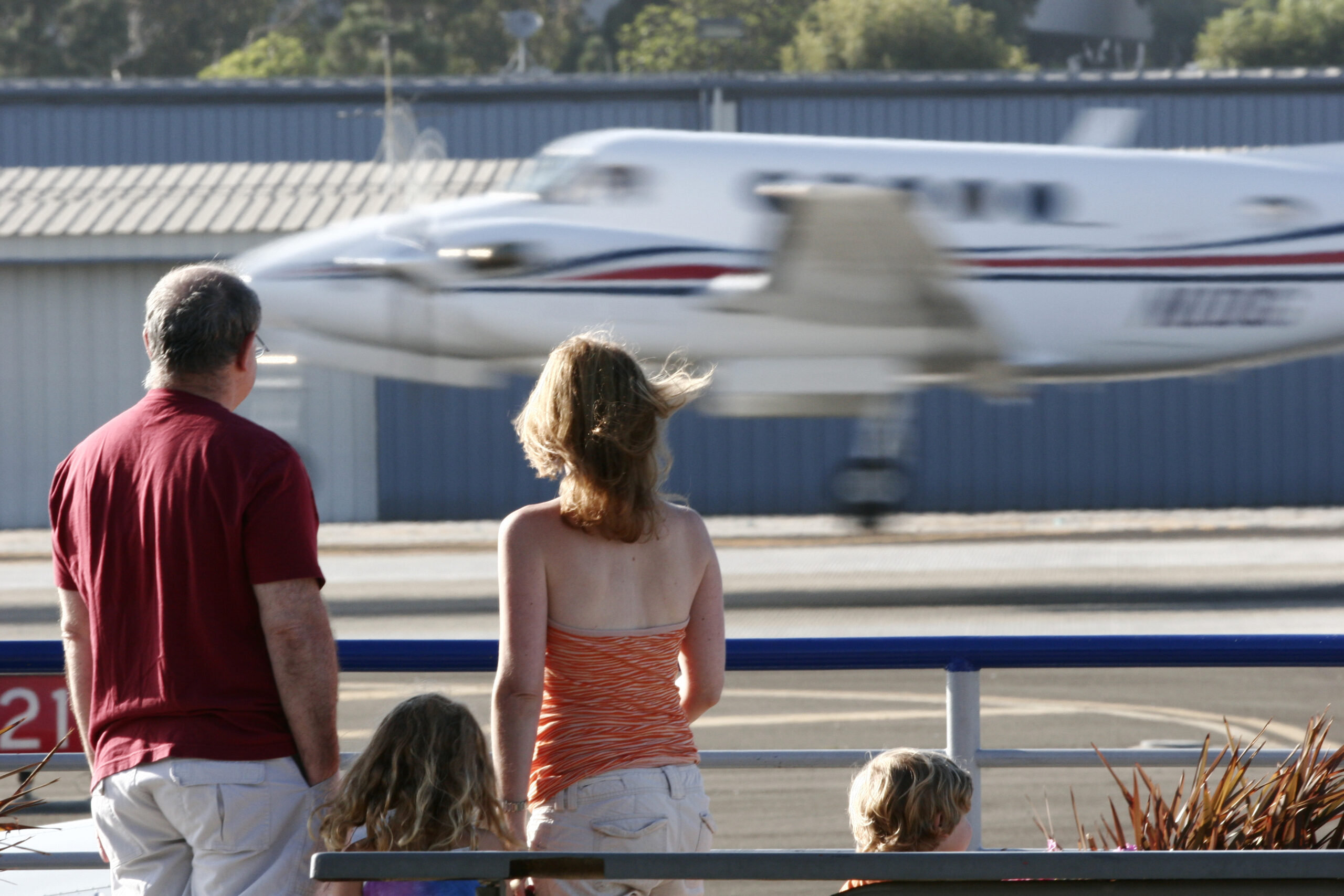CITY HALL — Residents attacked city officials at the Airport Commission meeting Monday night for being tone deaf to community desires in their examination of the future of Santa Monica Airport, calling for a closer look at closure and additional public input.
The panned presentation made by senior Public Works staff and a land-use consultant focused on changes at the airport to improve circulation and traffic woes, make the airport business-friendly and cut down on pollution and noise that plague the surrounding community.
What it did not do was focus on the audience's preferred topics: Aggressive curtailment of flight schools and other operations at the airport or outright closure.
That was a problem for residents of West Los Angeles, Mar Vista and Santa Monica who came out Monday night, as well as the commissioners themselves.
The proposal, which mainly tackled non-aviation land issues and some aviation-related mitigation efforts, seemed to preserve the status quo rather than push to reduce operations, said Vice Chair Peter Donald.
"This sets us up for accommodating the airport in the long run," Donald said. "It seems like we're making a decision on how to get along with this airport through hell and high water."
The sentiment was broadly shared by speakers, who demanded that staff look into nuclear options, like shortening the runway so that large planes would not be able to take off or land, kicking out flight schools that constitute a large percentage of the flights from the airport or capping emissions at the airport to protect residents who live immediately adjacent to SMO.
"Public health! Public health! Public health!" trumpeted Martin Rubin, a West L.A. anti-airport activist.
Those more aggressive plans were completely absent from staff's scope of work, and could even attract unwanted legal attention from pro-aviation forces like the Federal Aviation Administration, which has prevailed in several court battles with Santa Monica over operations at SMO, city officials suggested.
"Are you deaf because the airport noise is making you deaf?" asked Cathy Larson, a Sunset Park resident.
The trouble boils down to a now-familiar point of contention between the two sides that Public Works Director Martin Pastucha summed up in a sentence.
"Staff does not work for the commission," Pastucha said. "The commission is advisory to the council."
And if the City Council does not direct city staff to look into specific issues and come up with a course of action, staff will not "take it upon ourselves" to do so, Pastucha said.
That puts residents and the commission into what some perceive as a catch-22. The commission relies on staff to present its recommendations to the City Council, who then votes and directs staff to follow a specific course of inquiry.
If those thoughts don't end up in a staff report, there's little opportunity for the City Council to vote on them.
Chair David Goddard asserted that the commission's recommendations never make it to the City Council, and that the main areas identified in the most recent phase of the visioning process are the brainchildren of the pilot, pro-SMO community.
"I think we have a little bit of a disagreement on who makes the policy," Goddard said.
As for the pilot community, it remains committed to making SMO the "safest, cleanest and most environmentally-friendly in the nation," said Robby Rowbotham, president of Friends of Santa Monica Airport, or FOSMO.
"FOSMO has long said that SMO can be a better, safer, quieter airport, and we have made various suggestions as to how this can be achieved," Rowbotham said.
Residents also signaled a general distaste for the remainder of the visioning process, which has been an ongoing saga since it began in 2010.
Community members have complained since the beginning that staff had not looked at closure and that consultants over-estimated the value of the airport, which has traditionally had to borrow money from the General Fund to pay its bills.
Communication and the belief that staff's recommendations and conclusions align with public sentiment have also been lacking.
The third phase was no different.
David Chow, a director with consultant IBI Group, focused his presentation on improving ways to get in and out of the airport, and make it both more community and environmentally friendly.
One point he stressed was the ability to set up a small business incubator site on the property, possibly one focused on environmental technologies.
A fleshed-out version and other ideas will come back before the Airport Commission in February before going to the City Council in March 2013.
That timeline is too short, residents said, and means the City Council will only hear fully-formed ideas from the consultants rather than allowing the consultant to explore ways to realize community-driven concepts.
"I think we need to have another workshop meeting that's a real workshop where we see information from the consultants," said Armen Melkonians, a civil and environmental engineer.
Staff also documented ongoing actions to make SMO a "better neighbor," including efforts to enhance walls that shield nearby homes, pursue alternatives to leaded aviation fuels and replace ground power units that could cut down on jet emissions by reducing their idling time.
Educational efforts like seminars, collaboration on lead emission studies and a comparison of operations at SMO and 43 other general aviation airports have also been undertaken, said Susan Cline, assistant director of Public Works.
City officials even sent interns out into the field to manually count planes in order to get more information on operations beyond what control towers collect.
Ways to reduce flight traffic, like a plan to send flights to nearby general aviation airports, have already been killed in the court of public opinion.
ashley@www.smdp.com









